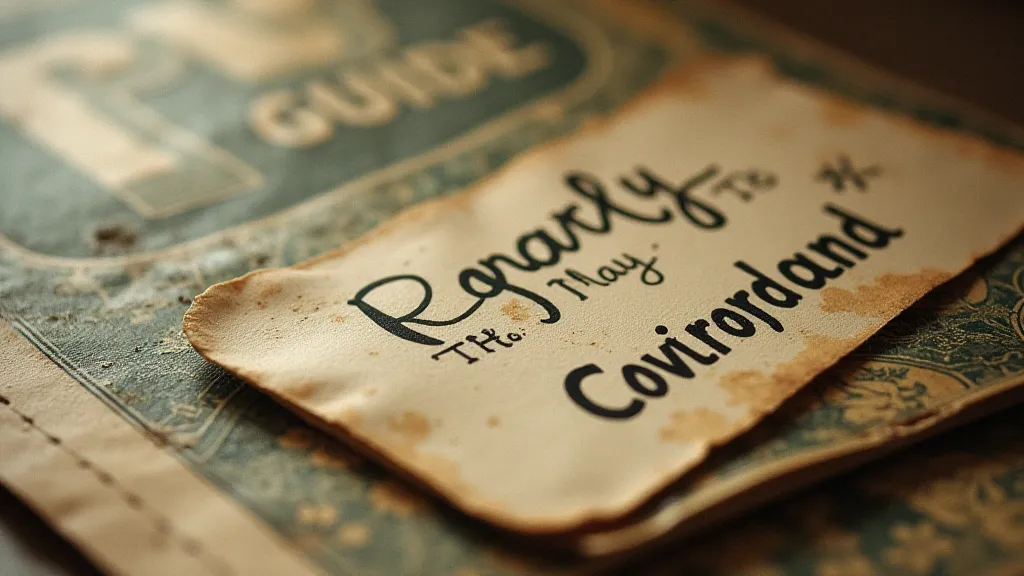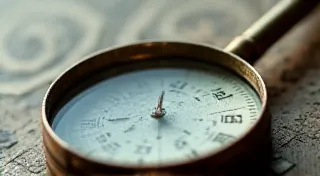The Curator’s Codex: A Practical Guide to Identifying First Editions and Rare TV Guides
There’s a particular scent that clings to old paper – a blend of aging cellulose, fading ink, and the ghosts of countless evenings spent glued to a flickering screen. For those of us captivated by vintage TV Guide magazines, this aroma isn’t just nostalgic; it’s the scent of history, of a simpler time when families gathered to anticipate the week’s television offerings. My own journey began with a chance discovery – a stack of pristine 1960s issues in my grandfather’s attic, each cover a vibrant portal to a vanished era. It sparked a fascination that's become a lifelong pursuit: understanding and appreciating the nuances that separate a common issue from a truly exceptional piece of TV Guide memorabilia.
Collecting vintage TV Guides isn’t simply about acquiring magazines; it’s about safeguarding a tangible record of our cultural heritage. These unassuming publications offer a remarkable snapshot of the evolving landscape of early television, from the groundbreaking dramas of the 1950s to the explosion of color programming in the 1960s. They illuminate the societal values, the marketing strategies, and the sheer optimism that characterized those decades. And, for the dedicated collector, they hold the potential for significant value, dependent largely on rarity, condition, and historical significance.

The Genesis: Understanding Early TV Guide Printing
The earliest iterations of TV Guide, from 1953-1955, are arguably the most coveted by collectors. These initial publications were regional, catering to specific metropolitan areas like New York, Chicago, Philadelphia, and Los Angeles. These regional editions are significantly rarer than the later, nationally distributed magazines, driving up their value considerably. Identifying a regional edition begins with scrutinizing the masthead. Early regional titles often lacked the standardized national branding we associate with TV Guide. Look for subtle differences in the font, layout, and the inclusion of local station logos. The zip codes, or lack thereof, are also crucial indicators – early regional issues predated the standardized zip code system.
Furthermore, early print runs were often smaller, and printing technology was less sophisticated. This resulted in variations in paper stock, ink quality, and even the alignment of the cover image. These seemingly minor differences are key to identifying first editions and determining their relative rarity. The nuances in layout and design weren't just functional; they reflected a burgeoning art form, shaping how viewers interacted with television programming. Some might even say the very way we consume entertainment was influenced by the creative decisions made in those early years. Understanding those nuances requires delving deeper into the visual language of the era, a topic beautifully explored in The Art of the Grid: Deconstructing the Layout and Design of 1960s TV Listings.
The Cover: A Window to Value and Identification
The cover is, of course, the most visually arresting element of any TV Guide. Its iconic imagery – Lucille Ball, Doris Day, Dick Van Dyke – became instantly recognizable symbols of the era. But the cover’s value isn’t solely determined by the featured star. Printing errors, misspellings, or unusual color variations can dramatically increase its desirability. For example, a cover with a noticeable ink smudge or a slight misalignment can be surprisingly valuable, attracting collectors who appreciate these "character flaws" as unique artifacts.
Color saturation is another crucial factor. Early color printing was a technological marvel, and variations in the printing process resulted in subtle differences in the vibrancy and accuracy of colors. A 1960s cover that appears unusually dull or faded compared to other copies from the same week might indicate a printing defect or an earlier, less common print run. Even the texture of the cover paper can be a clue – the thickness and finish can vary depending on the printing facility and the paper stock used.
The Interior: Beyond the Listings
While the cover grabs attention, the interior of the magazine provides equally important clues to its authenticity and rarity. Examine the editorial content carefully. Regional editions often featured localized advertising and articles catering to the specific interests of their target audience. Early issues often lacked the standardized columns and features that became commonplace later on. The advertisements themselves are a fascinating window into the consumer culture of the era, and their presence (or absence) can help pinpoint the issue’s origin and print run. Understanding the cultural context that shaped these advertising campaigns is crucial, as detailed further in The Static of Obsolescence: Why Fleeting Television Became a Collector’s Treasure.
Don't overlook the listings! While the TV schedules are the magazine’s primary function, subtle variations in the formatting, the inclusion of local station call signs, and even the spelling of names can indicate a regional edition or an earlier print run. It's within these seemingly simple schedules that entire narratives of a bygone era are embedded, lost to time unless actively sought out and preserved. Those dedicated to the preservation of these moments realize the profound responsibility that comes with holding these pieces of history, a sentiment echoed in The Ephemeral Archive: The Responsibility of Collectors in Preserving Television History.

Rarity & Condition: The Dynamic Duo
Rarity and condition are the twin pillars of TV Guide collecting. A rare issue in poor condition will be less valuable than a common issue in pristine condition. Condition is assessed using a grading scale, similar to those used for comic books. Grades typically range from "Poor" to "Mint," with each grade corresponding to a specific range of defects and flaws. Even minor creases, tears, or stains can significantly lower a magazine's grade and its value.
Certain weeks are considered “key dates” for collectors, corresponding to significant cultural events or the debut of highly anticipated television programs. TV Guides from these weeks are almost always more valuable, regardless of their condition. The first color issues, the premiere of "The Twilight Zone," and the launch of "Star Trek" are just a few examples of "key dates" that command premium prices.
Subscription History: A Lost Trail of Value
The history of TV Guide subscriptions, though often fragmented, adds another layer of complexity and value. Early subscription copies are exceedingly rare. They often bear unique subscription labels or markings that distinguish them from newsstand copies. These labels are a treasure trove of information, revealing the subscriber’s location, the date of subscription, and sometimes even the price paid. Tracing a subscription's provenance can be challenging but rewarding, potentially uncovering a lost piece of television history.
The decline of print media has made it increasingly difficult to access historical subscription records, but dedicated collectors and researchers continue to piece together the puzzle, uncovering fascinating insights into the magazine’s evolution and its impact on American culture. The echoes of past consumers, their preferences and purchasing habits, are embedded in the very fabric of these magazines, providing a unique lens through which to understand a moment in time. The stories hidden within these advertisements and subscription labels reveal a vibrant consumer landscape, detailed further in A Catalog of Moments: Finding Meaning in the Fleeting Appearances in TV Guide Ads.

Preservation and Future Considerations
For those fortunate enough to own vintage TV Guides, proper preservation is paramount. Storing magazines in acid-free sleeves and boxes can prevent further deterioration and protect them from environmental damage. Avoid exposing them to direct sunlight or extreme temperatures, as these can accelerate the aging process. The simple act of handling these precious artifacts with care can extend their lifespan and ensure future generations can appreciate them.





